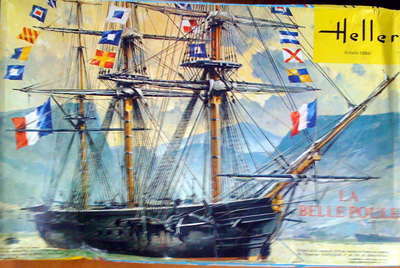| Home | Maritime Resources |
Ship Models | Machine Tools | Other Stuff | Site history |
last revised 14/04/12
|
|
French 60-gun Frigate LA BELLE POULE (1834) |
|
• A new
modelling project under development •
| Main Data |
|
| Displacement: | 2500 t |
| Length: | 54 m |
| Beam: | 14.10 m |
| Draught: | 3.80 m |
| Complement: | 300 |
| Armament: | |
| 32 | 30-pounders |
| 4 | 80-pounders |
| 24 | 30-pounder carronades |
 |

|

|

|

|

|

|

|

|

|

|

|

|

|
 |
 |
 |
 |
 |
 |
 |

|

|

|

|

|

|

|

|

|
 |

|

|

|
 |
The idea is to use
the plastic kit produced by Heller to re-create
the above dockyard model in a 1/200 scale, but the hull
only, without the rigging. However, the kit has a number
of shortcomings, as common with plastic kits. Very
noticeable are the misguided efforts by the mouldmakers
to put pronounced wood-grain on most hull surfaces.
Neither on the original nor on the dockyard model one
would be able to see such coarse grain. Another point is
the coppering that looks more like a slated roof than
the slick protective sheathing of both the prototype and
the dockyard model. In addition, the copper is absent
from the rudder, where again the wood-grain
re-appears. There are probably many more 'faults'.
In summary, it has
not yet been decided, whether the project will really go
ahead.
|